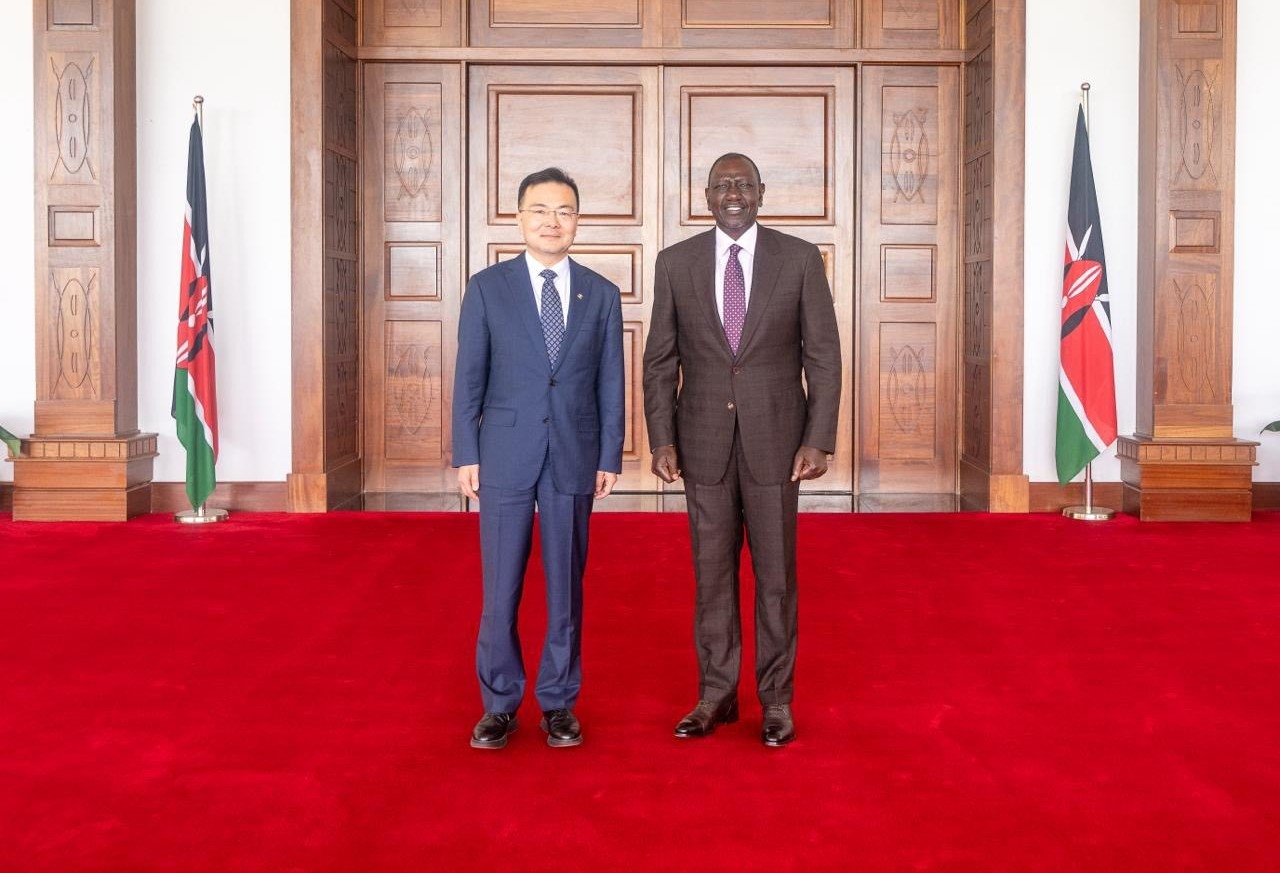 Kenya Wildlife Service officials conduct an ear-notching and tagging operation in Tsavo West National Park/KWS
Kenya Wildlife Service officials conduct an ear-notching and tagging operation in Tsavo West National Park/KWSKenya Wildlife Service (KWS) has launched a 15-day rhino ear-notching and tagging operation at Ngulia Rhino Sanctuary, Tsavo West National Park.
It will be the largest single exercise of its kind in Kenya’s conservation history.
 Kenya Wildlife Service staff conduct an ear-notching and tagging operation in Tsavo West National Park/KWS
Kenya Wildlife Service staff conduct an ear-notching and tagging operation in Tsavo West National Park/KWS
Led by Dr. Isaac Lekolool, Senior Assistant Director, Veterinary and Capture Services, the operation will notch and fit over 100 black rhinos with roller ear tags and transmitters to enhance monitoring, security, and data accuracy.
“This milestone highlights KWS’s growing technical and logistical capacity in large-scale wildlife operations and its commitment to science-based conservation,” KSW said in a statement.
“Through this initiative, KWS stamps its leadership in species recovery and sustainable management of natural resources, strengthening Kenya’s ecological resilience and community livelihoods.”
 Kenya Wildlife Service staff conduct an ear-notching and tagging operation in Tsavo West National Park/KWS
Kenya Wildlife Service staff conduct an ear-notching and tagging operation in Tsavo West National Park/KWS Kenya Wildlife Service staff conduct an ear-notching and tagging operation in Tsavo West National Park/KWS
Kenya Wildlife Service staff conduct an ear-notching and tagging operation in Tsavo West National Park/KWSIn the 1960s, Kenya boasted an estimated population of 20,000 black rhinos, yet within a mere two decades, rampant poaching decimated their numbers to less than 300.
Thanks to concerted conservation efforts, there has been a gradual resurgence in the black rhino population, with Kenya now home to 1,004 individuals.
Black rhino suffered a catastrophic decline across Africa in the 1970s and 1980s, both in numbers and extent of its range. Numbers plummeted from an estimated 65,000 in 1970 to fewer than 2,500 by 1992.
The decline in the eastern black rhino in East Africa was particularly severe where the large National Parks and Reserves such as Tsavo National Park and the Selous Game Reserve each used to hold perhaps twice as many black rhino as currently exist in the world.
The black rhino dropped in number in Kenya from an estimated 20,000 in 1970 to less than 400 animals by 1990 mainly due to poaching.
 Kenya Wildlife Service staff conduct an ear-notching and tagging operation in Tsavo West National Park/KWS
Kenya Wildlife Service staff conduct an ear-notching and tagging operation in Tsavo West National Park/KWS
Over the last 20 years in particular, considerable money and resources have been expended in several African countries aimed at saving the black rhino from extinction. As a result, the declining trend has reversed and numbers are slowly increasing.
As at the end of 2011 Kenya had 623 black rhinos while Africa had a total of 4,880+ black rhinos.
However, Illegal demand for rhino horn resulting in poaching was, and continues to be, the major threat to persistence of all species of African rhinos.
 Kenya Wildlife Service staff conduct an ear-notching and tagging operation in Tsavo West National Park/KWS
Kenya Wildlife Service staff conduct an ear-notching and tagging operation in Tsavo West National Park/KWS
It is speculated that the increase in poaching results from societal changes in some Asian countries such as Vietnam that has led to an increase in demand that is not associated with traditional Chinese medicinal use.
Furthermore, anti-poaching investigations and intelligence in some African rhino range States suggest that organized crime syndicates exploit, and perhaps even manipulate the newly expended demand for rhino horn.















